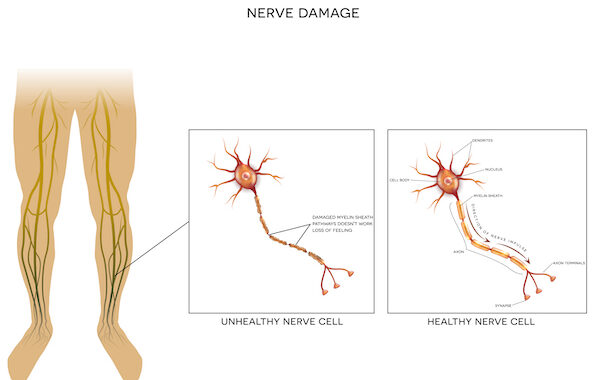The onset of pain in peripheral limbs can disrupt people’s daily activities and demand a change in the daily patterns. This pain and numbness results from the damaged peripheral nerves, which are responsible for sending motor signals from the brain and spine to muscles. This condition is called peripheral neuropathy (or peripheral neuritis).
The damaged peripheral nerves make it challenging for people to perform fine motor tasks and maintain balance while standing or walking. This leads them to eliminate physical activities of any sort from their routine. But is this act of expulsion of any advantage? Or should patients with neuropathy stay active? If yes, then how much?
In general, exercise is extremely beneficial for every individual and has a plethora of physical and mental benefits when done appropriately. In fact, a normal human should do 150 minutes of moderate activity throughout the week to maintain a desirable weight and have a healthy lifestyle.
However, this number might seem daunting and unachievable to patients with peripheral neuropathy having innumerable mobility limitations. Well, 150 is indeed a huge number, but not when it is broken into various small segments of 30 minutes.
Moreover, the intensity of the activities being undertaken should also be considered. Though patients with neuropathy should avoid overtaxing, they can take on a feasible and safe exercise program of moderate intensity.
The immediate impact of exercising is increased heart rate, and this is beneficial for all those suffering from neuropathy. The increase in blood circulation during physical activity strengthens nerve tissues by increasing the flow of oxygen.
Moreover, immobility puts patients with neuropathy at a higher risk of muscular atrophy and tightening, which leads to loss of flexibility. This negatively impacts metabolism and makes them gain fat, apart from making them feel exhausted all the time.
On the other hand, exercising improves balance, strength, mobility, confidence, and walking pace. As the patients do some physical activity daily, they have less fear of falling. In addition, exercise can improve neuropathic pain and sensory disturbances.
The proverb “slow and steady wins the race” stands true for those suffering from neuropathy. They should never exert, and the recommended level for them is “submaximal,” meaning just below the maximum effort.
Your ideal exercise session should always start with some low-intensity warmup exercises if you are suffering from peripheral neuropathy. To avoid muscle fatigue, you should do small amounts of stretching exercises throughout the day, preferably 5-10 minutes at a time. You can do this for a total of about 30 minutes.
If you are hunting for products that can help relieve your neuropathy pain, then FootDocStore.com is the place for you! From tablets to gels, all our neuropathy-relief products are podiatrist-approved and specially designed, keeping in mind the needs of patients with neuropathy.

